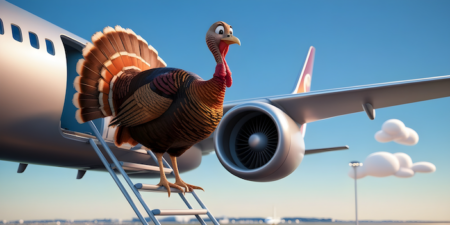Passengers now take seatback inflight entertainment (IFE) systems for granted. For airlines however, cost and practicality are big considerations when fitting or upgrading this service.
While most wide-body aircraft have seatback IFE, narrow-bodies have limited space to accommodate IFE systems. In a market that must keep a close eye on margins, this means the costs involved in fitting narrow-body aircraft with today’s IFE systems are not always justified by the returns.
Always searching for cost-saving opportunities, many airlines are actively seeking for new ways to reduce costs without compromising safety and comfort. From an entertainment perspective, this is far from easy.
Depending on the type of aircraft, an average IFE system installation costs GB£2-3m (US$3-4.5m) per system. Add in in-flight magazines and shopping brochures as part of the entertainment offer and the costs can go even higher. However, if they were able to pack the inflight entertainment, magazines and catalogs into a single device, the savings they could achieve would be considerable.
Wi-fi on planes a new spectrum of opportunity
When airline regulators relaxed the rules to allow airlines to provide wi-fi services onboard, they not only opened up an important passenger revenue stream, but also a whole new gamut of possibilities for IFE. Two methods are used to get this internet connection: air-to-ground (ATG) and satellite. ATG uses mobile phone towers on the ground with CDMA (Code-Division Multiple Access) technology and can only be used over land, not sea.
Satellite connection is provided through three frequencies: L-band, Ku-band and Ka-band. Of these, L-band is the slowest, Ku-band can go up to 40Mbps per aircraft and Ka-band is the fastest, depending on how many aircraft are in range of the satellite’s transponder at the same time. Using their own satellites or licensed capacity, many operators are now working to expand the service from the lower-frequency Ku band to the higher-frequency Ka band.
This connectivity means airlines can now start to phase-out their existing IFE systems and opt to provide content via tablets instead. All content can be centralized and streamed to devices onboard. Passengers can choose to use their own devices, or use airline-provided devices to access the content.
Some airlines have already sensed this opportunity and begun to distribute tablets pre-loaded with content as their IFE offer. For example, United Airlines has a program that allows flyers to use their personal devices to access the airline’s entertainment library, including a choice of movies and TV shows that they can watch on their personal laptops, Apple iOS devices or Android devices.
In an industry where there is a lot of emphasis on working within the tightest possible margins, in the long run this exercise will reduce costs substantially for airlines. It could even contribute to lower fuel costs, thanks to the lighter loads created by device-based IFE.
When it comes to new installations and re-fits, equipping aircraft with tablets is unlikely to cost more than GB£200,000 (US$300,000) per aircraft around one-tenth the cost of an embedded system. Airlines can also save the costs involved in printing the in-flight magazine by delivering the same content through the tablets, keeping passengers entertained and improving their profit margins in the process.
In-flight IT management
In order to realize these significant cost savings, there are a few integrated IT systems and processes that an airline looking to implement a tablet-based entertainment system and in-flight wi-fi would need to put in place.
These measures include a mobile device management platform to enable them to centrally manage the tablet devices and a network performance monitoring solution to keep track of wi-fi performance and ensure the network is always up and running something which is fundamental to the entire system.
Applications performance is also key, particularly when it comes to managing the onboard servers from where the films, magazines and music is streamed. As well as managing and monitoring the performance of these systems and applications on the ground, the airline would also need to put an automated sequence in place on the aircraft so that, in the event of the server not responding, the unit can be reset.
Giving each aircraft its own network and application hub would also help in enabling the system to automatically respond to problems on a long-haul flight; for example, where the satellite connection to the team monitoring the system on the ground may be lost. This means that even in network black spots, the entertainment system will continue uninterrupted because the server is hosted on the aircraft.
Using historical data of where these network black spots will be, it could also be possible for airlines to alert passengers using wi-fi as to when their connection will be lost and the approximate time when they can expect to re-connect.
Currently, wi-fi services and bandwidth are at a premium in the airline environment. As price and technology make this service more accessible, advanced applications management solutions could also help airlines to prioritize their own intranet-based entertainment systems so that low-bandwidth-consuming services such as email are given priority over third-party streaming sites such as Netflix, especially during peak times. This setup helps ensure that available network bandwidth is optimized.
From a passenger’s perspective, these behind-the-scenes processes should be hidden from view so that, while they are aware of what services will be available to them and when, the entertainment and wi-fi services they use are seamless and uninterrupted.
Pradyut Roy is product consultant at ManageEngine
www.manageengine.com




